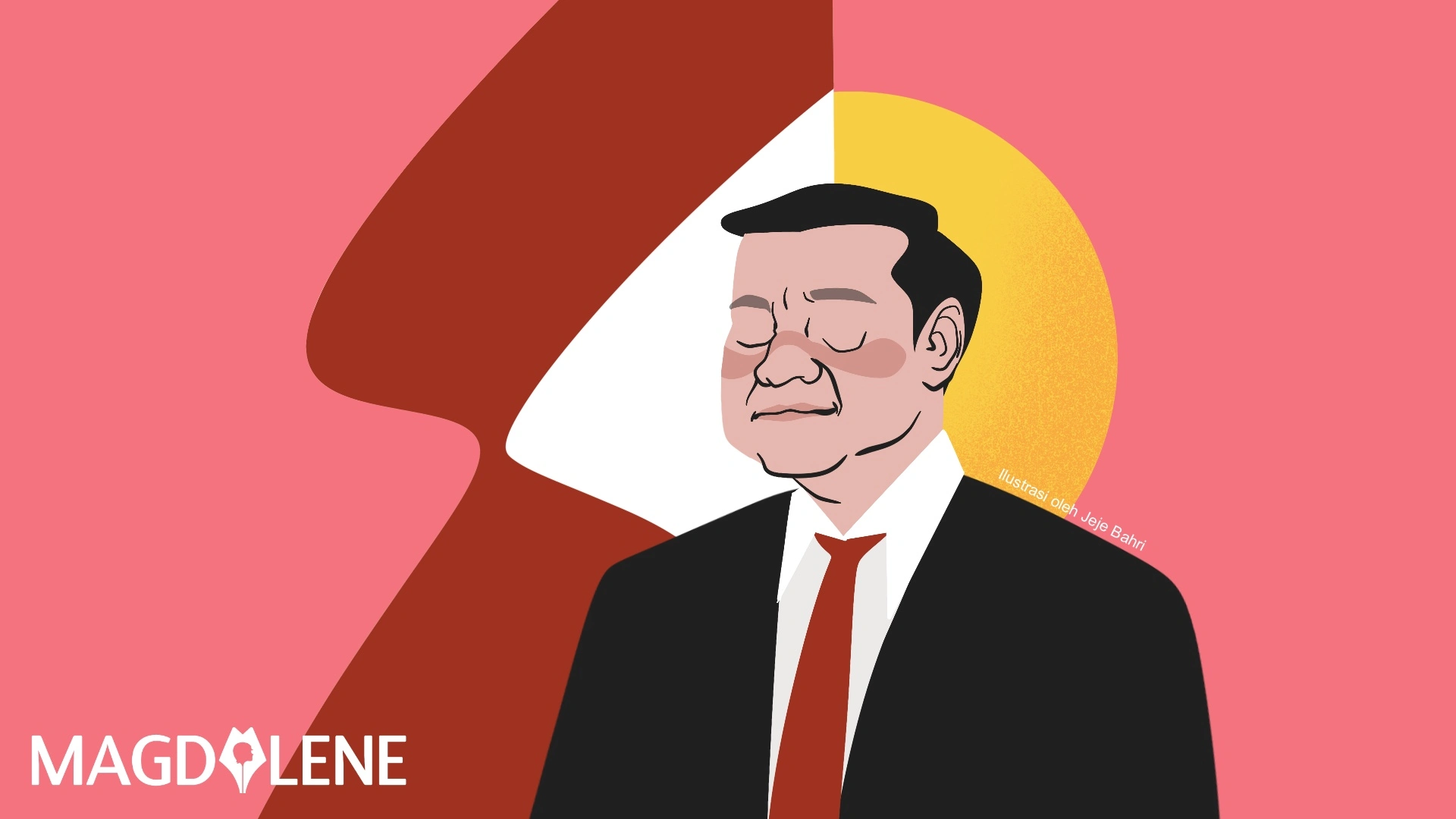More Than Mumblecore And Bigger Than Barbie, Who Is Greta Gerwig?
Given her track record of honouring femininity, intimacy, domesticity and women’s culture, I think Barbie is in safe hands with Gerwig.

With the new Barbie movie, Greta Gerwig is joining an elite class female filmmakers. Alongside Ava DuVernay, Patty Jenkins and Kathryn Bigelow, Gerwig is one of only a few women to direct a live-action film with a budget of US$100 million.
Directing just three movies, Gerwig has quickly become a household name in Hollywood. However, her movie career is much longer than just her directing career. Gerwig has had a unique career, moving quickly from in front of the camera to behind it.
Although disparate in subject matter – teen angst, civil war family drama and much-debated children’s toys – Gerwig’s film oeuvre is united by her interrogation of femininity. She is known for her dedication to telling women’s stories with heart and humour, and an intimate “indie” style of film-making.
Also read: Digital Feudalism in Streaming Era: The Exploitation of Hollywood’s Writers
Mumblecore
Gerwig started her career acting and co-writing in a sub-genre of American indie cinema called “mumblecore”. These low-key, naturalistic films featured non-professional actors in mundane, everyday scenarios.
The term “mumblecore” was coined by film critics to describe a wave of do-it-yourself, dialogue-driven films where characters literally mumbled and bumbled through life.
Due to the improvisational nature of mumblecore films, the cast often shares writing credit, taking an active role in constructing dialogue, character and story.
Gerwig was a fixture in this low-budget experimental film scene, working closely with Joe Swanberg, co-writing and starring in LOL (2006) and Hannah Takes the Stairs (2007). Further developing her skills, she co-directed Nights and Weekends (2008) with Swanberg.
Andrew Bujalski’s Funny Ha Ha (2002) is generally considered to be the first mumblecore film. Emphasising amateur actors and naturalistic settings, Funny Ha Ha’s depiction of a recent college graduate trying to find a temporary job set the tone and template for a new wave of low-budget, low-key filmmakers.
We can see the influence of mumblecore in TV shows like Girls (2012-2017), Broad City (2014-2019) and High Maintenance (2016-2020).
Mumblecore has proven to be an important training ground for many of today’s influential filmmakers, including Barry Jenkins, the Safdie Brothers, and, of course, Gerwig.
Also read: The Flash Review: Michael Keaton’s Batman Is the Real Star of This Multiverse Mashup
Indie Darling
After her mumblecore success, Gerwig began working as an actor with more established indie writer-directors, such as Woody Allen in To Rome with Love (2012), Whit Stillman in Damsels in Distress (2011), and Rebecca Miller in Maggie’s Plan (2015).
Gerwig quickly established herself as a quirky leading lady who The New York Times’ film critic, A.O. Scott, describes as “more goose than swan … big-boned and a little slouchy, indifferent to the imperatives of gracefulness”.
Perhaps the most important relationship of Gerwig’s career is with writer-director Noah Baumbach. Gerwig and Baumbach met when she starred alongside Ben Stiller in Greenberg (2010). They have been together since 2011 and share two children.
Thus far, Gerwig and Baumbach’s creative collaboration has resulted in Frances Ha (2012), Mistress America (2014), White Noise (2022) and now Barbie. Gerwig co-wrote and starred in Frances Ha and Mistress America, with Baumbach co-writing and directing.
Under Baumbach’s direction, Gerwig’s sparkling and vivacious energy is undeniable. She oozes awkwardness, youthful abandon and joy. As The New Yorker’s Richard Brody writes, “Gerwig may be famed for acting like a nonactor, but she’s an extraordinarily accomplished actor.”
In Frances Ha and 20th Century Women (2016), Gerwig is electric, demanding attention alongside other magnetic screen presences like Adam Driver, Annette Bening and Elle Fanning.
In recent years, Gerwig has moved increasingly behind the camera, starting with her directorial debut, Lady Bird (2017).
Also read: ‘Across the Spider-Verse’ and the Latino Legacy of Spider-Man
A Director
Lady Bird was much more widely watched and acclaimed than most filmmakers’ debut films, earning five Academy Award nominations. Gerwig was nominated for writing and directing, making her only the fifth woman to be nominated for the best director award.
Perhaps owing to her career as a writer and actor, Lady Bird catapulted Gerwig onto many “directors to watch” lists. Lady Bird also established Gerwig’s investment in femininity, women’s culture and the lives of young women, which are historically devalued.
Directors (both men and women) have found critical and commercial success telling stories about masculinist concerns, such as war epics like Sam Mendes’ 1917 (2019), stories of male genius like Christopher Nolan’s forthcoming Oppenheimer (2023), and superhero franchise films such as The Batman (2022).
In contrast, women-centered, domestic stories rarely receive as many kudos, as they do not have the cultural veneer of “importance”. Yet Gerwig’s films consistently challenge this dichotomy by rendering intimate, personal stories of women’s lives large on our movie screens.
Capitalising on the commercial and critical success of Lady Bird, Gerwig parlayed her newfound cultural and industrial capital into writing and directing a new adaptation of Louisa May Alcott’s Little Women. While it may not seem so now, this was a risky second film. Gillian Armstrong’s 1994 version, starring Winona Ryder, Susan Sarandon, Claire Danes, Kirsten Dunst and Christian Bale, is a classic and beloved by a generation of women.
Gerwig’s Little Women (2019) starred Lady Bird’s Saorise Ronan and Timothée Chalamet, and was nominated for six Academy Awards. Such a well-known and beloved adaptation comes with it high expectations, but Gerwig’s version has been widely praised as inventive, yet faithful.
With Little Women, Gerwig established herself as a powerful writer-director able to shepherd beloved properties with nuance and intellect. With Barbie, Gerwig seems to be embodying the claim made by Amy March in Little Women that “writing things is what makes them important.” In writing (and making a movie) about Barbie dolls, Gerwig is bestowing importance.
If the Barbie trailers are to be believed, we can expect the film to take seriously the much maligned feminine cultural object, approaching the much-loved doll (and her friends) with irony, intelligence and love. From her mumblecore films through to Lady Bird and Little Women, Gerwig has infused her work with a kindness, a sharp wit and a reverence for femininity.
Despite the big budget, flashy trailers and movie stars, Barbie dolls are inherently domestic and personal. Ask any child with a beloved Barbie and they can tell you all about their doll’s personality, peculiarities and professions.
Given her track record of honouring femininity, intimacy, domesticity and women’s culture, I think Barbie is in safe hands with Gerwig.![]()
This article was first published on The Conversation, a global media resource that provides cutting edge ideas and people who know what they are talking about.












